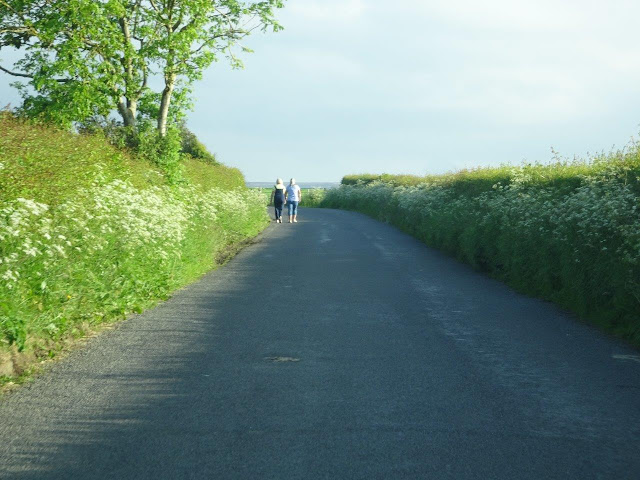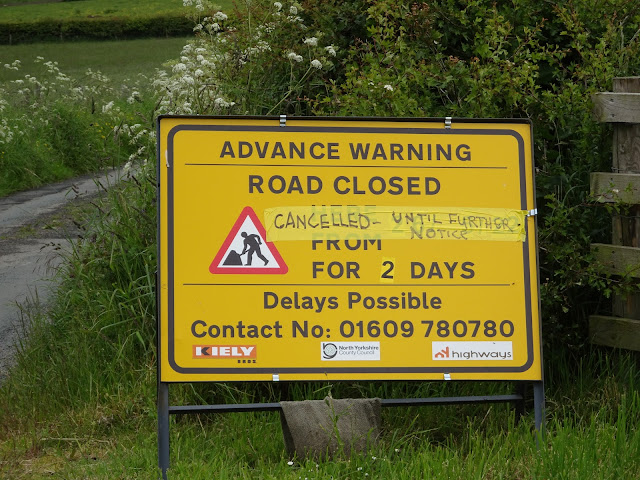I am a strong believer that you really cannot experience a country unless you can get out to the out-of-the-way places that driving a car affords you. While it is true that you can see a lot from the windows of a bus or a train, those things do not stop at tiny towns or get you out among the cows and sheep of rural life. Yes, you will probably get lost and might even have car trouble, but in fact, some of my most memorable experiences traveling have been getting lost or even having a flat tire, as I did about 15 years ago in Scotland. (I got a ride in a tow truck and ended up having to buy a tire in a small repair shop, and got some good suggestions from the mechanics on where to eat and what to do.)
Admittedly, the United Kingdom presents more challenges to driving than does most of Europe and the rest of the world. It can really be scary to drive on the wrong side of the road and manage to find your way in a place where road signs might not be clear or can be missing at intersections, especially in larger towns and cities. I remember one round-about in Inverness that had maybe 6-7 roads exiting from it, and I probably took nearly all of them before i found my hotel way back in 2008! (Your GPS might tell you to take the 4th exit, but often it is not clear if that little street was a driveway or an actual exit. And it is very hard to be looking at the GPS map while you are in traffic or pressured by other vehicles.)
Most of us fear driving on the left side of the road in a vehicle where the steering wheel is on the right side of the car. Personally, I think driving on the left side of the road is the least of your problems in driving in the UK. Freeways are easy because you just follow the cars in front of you and stay in the truck lane. (Most of us RVers are used to staying in the truck lane anyway, and I have never passed anyone in the UK, so no worries about that.)
Problem #1 - Narrowness of Roads
For me, at least, the really tricky part is the narrowness of the roads and the lack of shoulders. Even the lanes of freeways and heavily traveled roads are narrower than the ones we are used to in the U.S. I don't have any examples of freeways, but here is a photo of typical road which we would classify as somewhere between primary and secondary--possibly a few trucks, but mostly car traffic, but notice the lack of shoulders. If you have to move over to avoid a large truck coming towards you, your tire could experience a drop off of several inches, so you need to make sure you stay on the pavement.
Another problem is that there is a sharp curb on the side of the road. It is intended to make sure you do not run over the sidewalk and hit pedestrians, but it can cause a tire blowout. (Like the one I had in Scotland that caused me to get that ride in a tow truck! I was avoiding a large tour bus going around a corner and hit the curb.)
Country roads tend to be one-lane, like the examples below.
Such roads are one-lane, but not one-way, so if another car comes from the opposite direction, one of you is supposed to pull over to let the other car pass. Notice in the above photo that thick vegetation and dirt banks make that hard sometimes, plus there is a hill not too far ahead that means you have only seconds to react. Remember the old game of "Playing Chicken"??
Unfortunately, such roads also come with hazards such as walkers and bike riders.
And in some places, such as the Moors national park, there are often grazing animals sharing the road. This time of year, almost every ewe has one or two lambs. I like this sign, but you really have to watch out for sheep and lambs. The tricky part is that if a lamb is on one side of the road and his/her mother is on the other side, they often panic and run across to join her for safety. And they often are just standing around on the road and don't always know enough to get off when a car comes.
Problem #2 - Narrow Bridges
Even when a road is wide enough, you will often encounter narrow bridges, like the one below. Stone country bridges certainly add to the rural charm of a country, but they can also be a hazard, especially when they are on a curve, and you cannot see who is on the other side until the last minute. By the way, the sign on the left says, "Give way to oncoming vehicles" but you can't do that if you can't see them easily.
Problem #3 - Driving Too Fast
To make the problem more dangerous, the speed limits on the narrow roads above are 30-40 MPH, which I think is much too fast. I have often had to hit my brakes and actually stop to avoid a car rushing past me at 25-30 MPH, while there are only a very few inches between us. Scary!!
And the two-lane road with the line down the middle has a speed limit of 60 MPH--way too fast, in my opinion.
Problem #4 - Faulty GPS Instructions
I am repeating some of the photos I posted earlier when my GPS decided to give me a tour of the pedestrian areas of York. It was insistent that I drive through this arch which was blocked off by a post to prevent cars from driving through. I did later find out that the post was removed very late at night so that businesses could get deliveries, but somehow my GPS should have known that and avoided it as a route.
And here is an arch that I really did drive through. It was one-lane but there was a stop light that did allow only one direction at a time. But again, there were other routes that the GPS could have used to get me to my destination.
Here is a legitimate street in the town of Whitby. I did not drive it, but took a photo of it and the next street that seemed pretty iffy to me. They both should have been marked for deliveries or local business traffic only. The latter is because the road in the second photo may have gone to a parking area for the nearby businesses or residences.
Problem #5 - Parking Rules
Parking rules seem to hardly every be enforced. I was once visiting a small town in England and was concerned about where I had left my rental car. I asked the older couple in the visitor center how often the parking official came around to check parking. I was expecting an answer of an hour or two, but after some thinking, they decided he came around maybe once or twice a week!!
Now, in this first photo, the cars are perfectly legally parked because there are no "no parking" signs and no double or single yellow lines along the curb. A single yellow line means parking allowed only during certain hours, but a double yellow line means no parking ever.
The problem here is that the road is too narrow for parking even on one side. If a car comes from the opposite direction, no doubt at 50 MPH, one of you will have to slow down to let them pass or somehow squeeze over to pass assuming you have a narrow vehicle, and are not driving a big truck or bus. This is where you play the "chicken" game.
Ah, but here is the solution. If you can't park on the road, go ahead and just park entirely on the sidewalk!!! Only a small part of your vehicle will hang over the double yellow lines!!
Ditto for here. The cars of the left are parked on the sidewalk and the ones on the right are parked in the roadway directly on the double yellow lines.
And this one is on a hill so you hope you can see another car coming.
Ditto again, except this is another example of everyone parking perfectly legally because there are no yellow lines on the left and the cars on the right are parked in a spot intended for parking.
But does it really make sense to allow parking where cars are supposed to be driving??????
Conclusion
As you can see from these examples, driving on the wrong side of the road is nowhere near as much of a problem as trying to navigate all the hazards that literally pop up with little notice as you are trying to get somewhere. Locals seem to have no problem with this, but it really adds to at least my personal stress when driving.
The good news is that my next two long drives will be mostly on freeways where no one parks, and I will be in Scotland as of Friday afternoon. As a man I recently met who was traveling with his grandson agreed, people were too aggressive in England with their driving, and said I would notice a difference once I drove past Edinburgh! That was my experience in the past, and I compare it to people driving around LA or the Bay Area, and people driving in a rural Midwestern or desert area. I think it must be the stress of crowded living, and Scotland is much less crowded and stressful.
Also, I thought this sign was funny, and I had to stop on the country road to read it a couple of times to figure out that they were giving advance notice of something that would not occur. I assume it did not occur to them to just take the sign down completely!




















I think that my driving the RV along the narrow MX roads in Baja probably trained me more than anything fro my experience in Scotland. I remember following Liz's 8.5 wide Class C and watching just how close to the edge of the pavement that outside tire was. (I just remember telling myself that my rig was 1/2 foot narrower.) And then the huge buses would charge right at you. In most cases there were absolutely no edges of safety. Personally I preferred the narrow one tracks in Scotland. I went as slow as I wanted. Pulled over when I needed. After that first week I could drive on the busier roads without having a complete heart attack but it was never as relaxing. I also remember looking at that front left tire and seeing all the scuffs and dings on the rim. The rim told the story of how many curbs that wheel had hit. Keep up the good journey. Tina
ReplyDeleteThat's why my travels, and yours, are adventures, not "holidays"!! I really like the one-track roads, but in this area they are also hilly and curvy, more so than I experienced in Scotland, so you never know what is over the next hill or around the next corner. I drove to the Coop grocery in Castleton this afternoon as I wanted some ice cream. I missed the store going through the first time, so I had to turn around and go through again, except this time the parking was on the opposite side of the street, so I dove over there and found a spot. When I left, there was another car behind me, so I not only had to unparallel park, but I have to get over to the other side of the road before anyone came along!
ReplyDelete